Hallowed Underground
In which I explore the lunch offerings in the passageways beneath Buenos Aires' most iconic monument.
Quite possibly Buenos Aires’ most iconic monument, the Obelisco, or obelisk, dominates the city’s largest avenue, 9 de Julio and here. While American expats and visitors joke about it being a mini-Washington monument, it’s actually a very different design - modernist versus classic Egyptian architecture. I took a moment to delve into the history of not just the Obelisco, but obelisks in general. Originating in Egypt, they were used to mark the entrances to sacred temples of the sun-god, Ra. In form, they are four-sided, with a pyramidal top.
Now, the site of the one here was originally one of BA’s most important churches, San Nicolás de Bari, built in 1733, and the site of where the Argentine flag was first raised over the city. The church was redesigned and restored several times, but in the end, was demolished in 1933 in order to build the thoroughfare of Avenida 9 de Julio. The church was relocated and rebuilt several blocks away, at Av. Santa Fé 1352. As part of the modernization of the city center, the Obelisco was built in 1936 in the center of the avenue to commemorate Buenos Aires’ quadricentennial - four hundred years since it was founded by Pedro de Mendoza.
The monument is a gathering point for popular movements. It’s often the site of mass protests. It was the center-point for the World Cup win celebrations a couple of years back. And it’s often got a somewhat artistic focus having been not just lit with different colored lights, but has been encased in pink cake at one point, and draped with a giant condom at another. In fact, the early start of such public demonstrations caused the city council to rethink its existence, just three years after it was built - in 1939 they voted to demolish it. It was only saved by a public campaign that convinced the mayor at the time to veto the vote.
The Obelisco is 67.5 meters in height, roughly 222 feet. It’s constructed of concrete, covered with white stone. There is a stairway (206 steps) inside which, when open for visitors (not often anymore, though it was when I first moved here), leads to some small observation windows. What’s most surprising, for a civic project, is that after the design was approved, the foundation was dug, and construction was completed, in a mere 31 days. Contrast that to, as noted earlier, the Washington Monument, which is about 2½ times the size, built of marble, granite, and bluestone, and which after approval took… 36 years to build… albeit partially due to that little north vs. south kerfuffle in the mid-1800s.
But we’re not here today for the Obelisco itself. Although most people know that several subway lines run underneath the monument, and there’s a station there. I’m often surprised by how many people don’t seem to know that there are two galerías - pedestrian hallways that are lined with shops and stands, that run underneath the avenue about half a block north and half a block south of the Obelisco. Now there used to be quite a few lunch counters in both, these days there are just three - two in the south passage and one in the north. And I’m taking you underground with me.
The video, obviously, is a speeded up walkthrough of both passageways, along with one side passage from the north side that leads to the subway station. Let’s start on the north!
This gleaming façade houses Bar Plaza Centro. The gleam kind of ends as you approach.
Past the counter, this is one of the more dilapidated kitchens I think I’ve ever seen. Well there was that one on Avenue C that someone once wanted to hire me to be the chef at, out of which I walked in abject horror. I could fill a notebook with building and health code violations that were visible just sitting there at the counter. I hesitate to think what would accumulate if we went behind it.
I decided that at each place, I’d try one of their straightforward beef empanadas, and a main course that seemed to be one of their more popular offerings. Upfront, the innards of this empanada were the best of the three places - well seasoned, juicy, really delicious. But as you can see, the bottom of it (which the young counterman tried to hide by adjusting its position on the plate) is still basically raw, and falling apart when he took it off the baking tray.
For the main course, I’d actually wanted to order their meatballs with mashed potatoes - something you all know I love (or if you don’t, see here, here, and here). But, they’d sold out the day before and they hadn’t yet made more meatballs. So I went with a plain milanesa. Although a bit glistening with oil, this was actually a pretty damned decent milanesa. The meat was tender, and the crust thin and crunchy, with a nice balance between the two. It was seasoned with salt, possibly a little pepper, parsley, and garlic. For 7000 pesos ($5) with side dish (which, the counterman offered, could be my empanada, normally 2000 pesos ($1.50), so I went with that), this is a steal.
Moving on to the south corridor.
This is Mac Sandwiches, formerly Bar Mac, which, surprisingly enough, doesn’t seem to be primarily about sandwiches. They do have them, it just doesn’t seem to be their focus. Nor what most people were eating.
Instead, the display cases focus on a variety of empanadas, and a trio of different tortillas - plain potato, potato stuffed with cheese, potato stuffed with ham and cheese.
The empanada was the prettiest of the three, and had a lovely, lightly crunchy shell. But the filling was completely bland and kind of mushy. Not one of my favorites. Also the least expensive of the three at only 1800 pesos (about $1.30).
Although a tasty tortilla - I went with the ham and cheese stuffed version - the problem here is that they’re not being made to order. Now usually, the insides are a bit on the slightly undercooked side, like a good omelet. Here, they call that babé, and if you order tortillas or omelets, you’ll often be asked if you want it babé or cocida - slightly undercooked or fully cooked. I’m guessing that in a situation like this, where the tortillas are sitting on a display counter for a stretch of time, they don’t want them undercooked, so they’re really solid through and through. They’re also big enough to be a shared meal - I ate half and brought the other half home for Henry. Worth the 7000 pesos ($5), especially for two to share.
And finally, we move on to Bar Obelisco Sur. I think this place used to be called Jonatan, and was noted for their tortillas rellenas - like the one I’d just had above. In fact, it was a TikTok lauding their tortilla that led me to the galerías in the first place, only to find that it’s no longer there. This place also had the most friendly service - the other two places were pretty much just very business-like.
Here, sandwiches are clearly the mainstay of the menu, though I considered the tortilla rellena, kind of wondering if this was maybe just a renaming of the previous place. The guy behind the counter kind of looked like the guy in the video. But honestly, the one tortilla in the display case looked a bit burnt and collapsed.
Great filling on the empanada, with a kick to it. Definitely some chili. The let down, the crust. While light and flaky, and probably when it was first baked, excellent, it suffered from having sat around and then being reheated in a microwave. 2000 pesos, or about $1.50.
For my sandwich, since that seemed to be forte, I went with a lunetta, basically a giant medialuna - similar to a croissant, but a different kind of dough. Everyone here eats medialunas in the morning, for snacks, as sandwiches. There are two basic types - manteca, literally meaning butter in Argentine Spanish (everywhere else it means lard), and ofttimes called dulce, or sweet, which are usually puffy and glazed with something sugary, and grasa, meaning fat, or sometimes salada, or salty, which are thinner, usually crunchier, and savory. For some reason, perhaps the form, it’s never the savory ones that are used for sandwiches, but the sweet ones. It’s an odd flavor combination to have a sweet pastry filled with mayo, ham, and cheese. But one comes to accept, and perhaps even enjoy it. The oddest example of this sort of Argentine classic is a pionono, which is a swiss cake or jelly roll sheet cake filled with something savory, like chicken or tuna salad. Back to the lunetta - not bad - it was a great large medialuna, and it was perfectly acceptable supermarket style ham and cheese. 4000 pesos, about $3.
And that’s our deep dive under the Obelisco.
One day we’ll get into the story about more or less above the Obelisco… this house sitting atop a neighboring building….


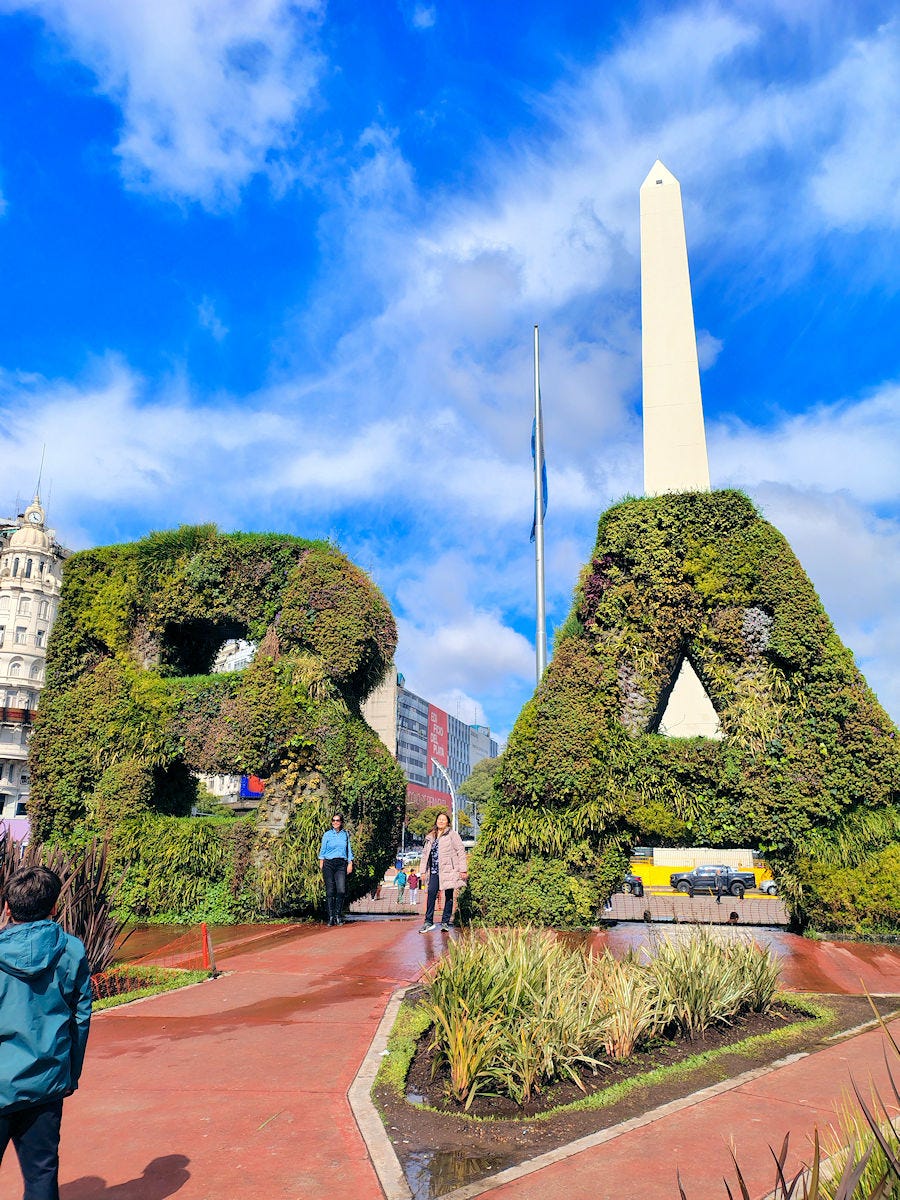
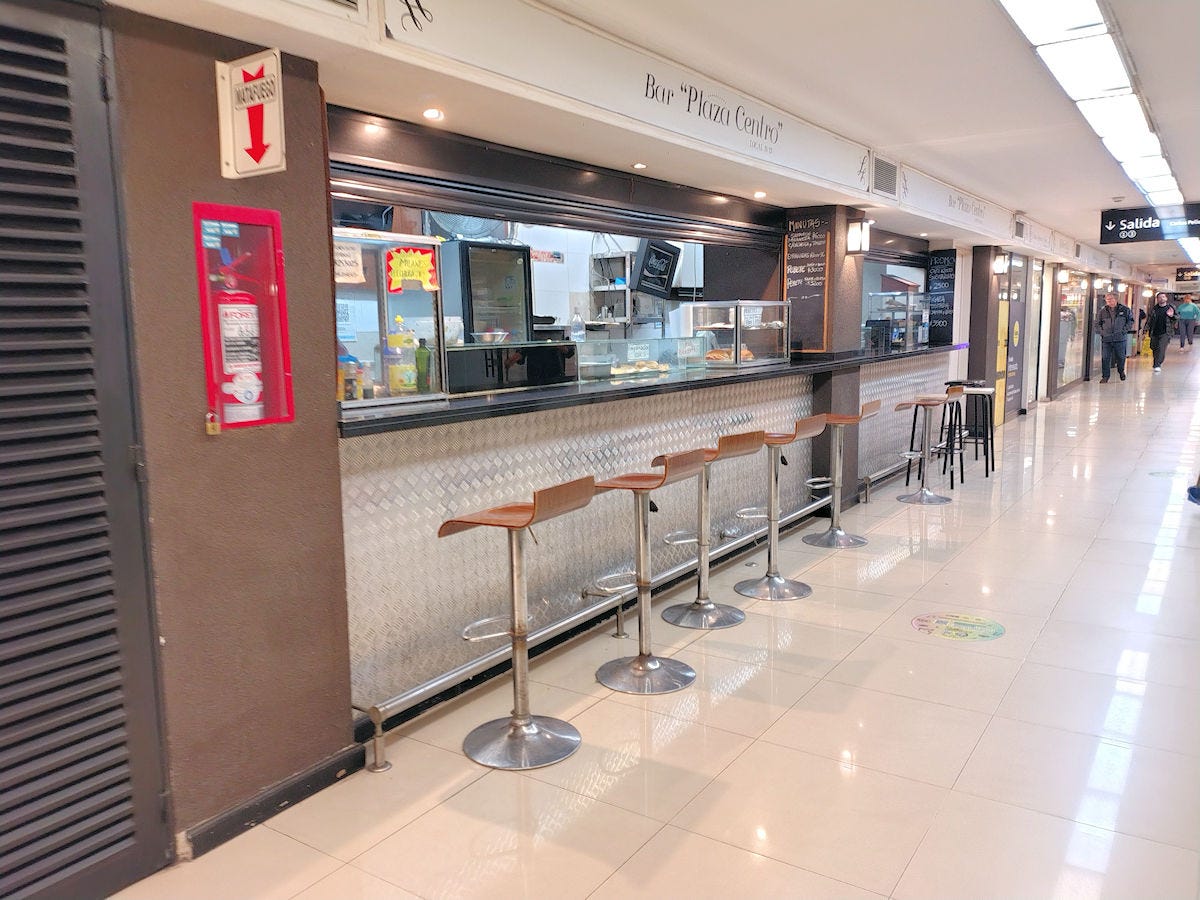
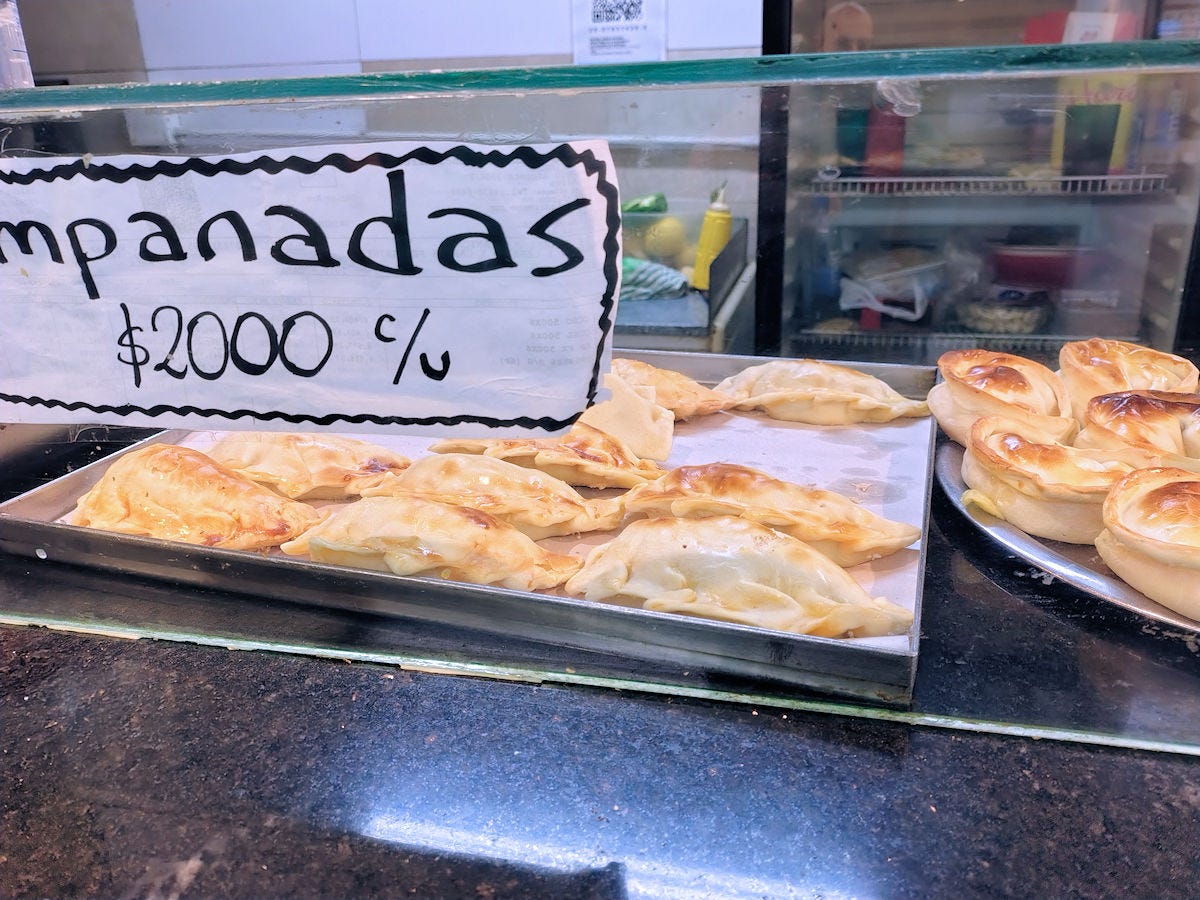

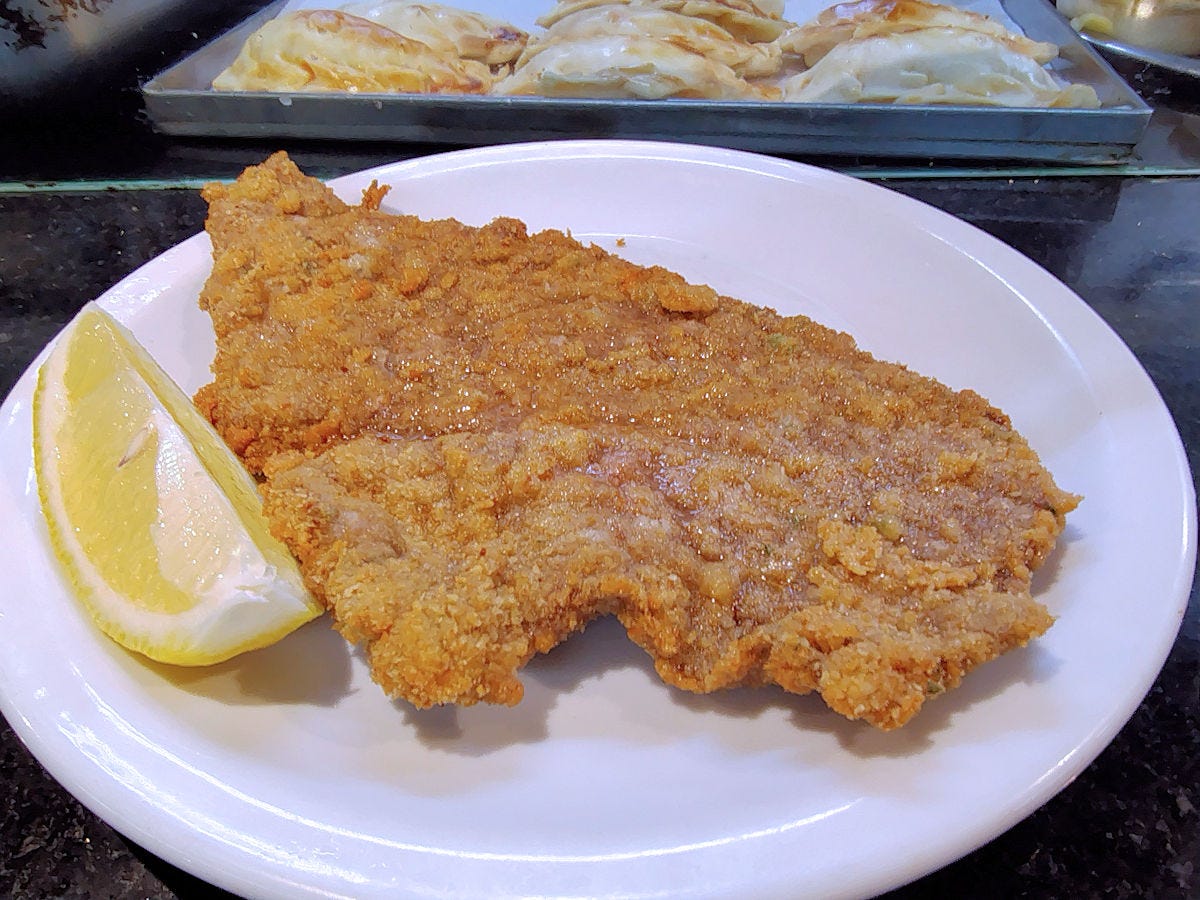

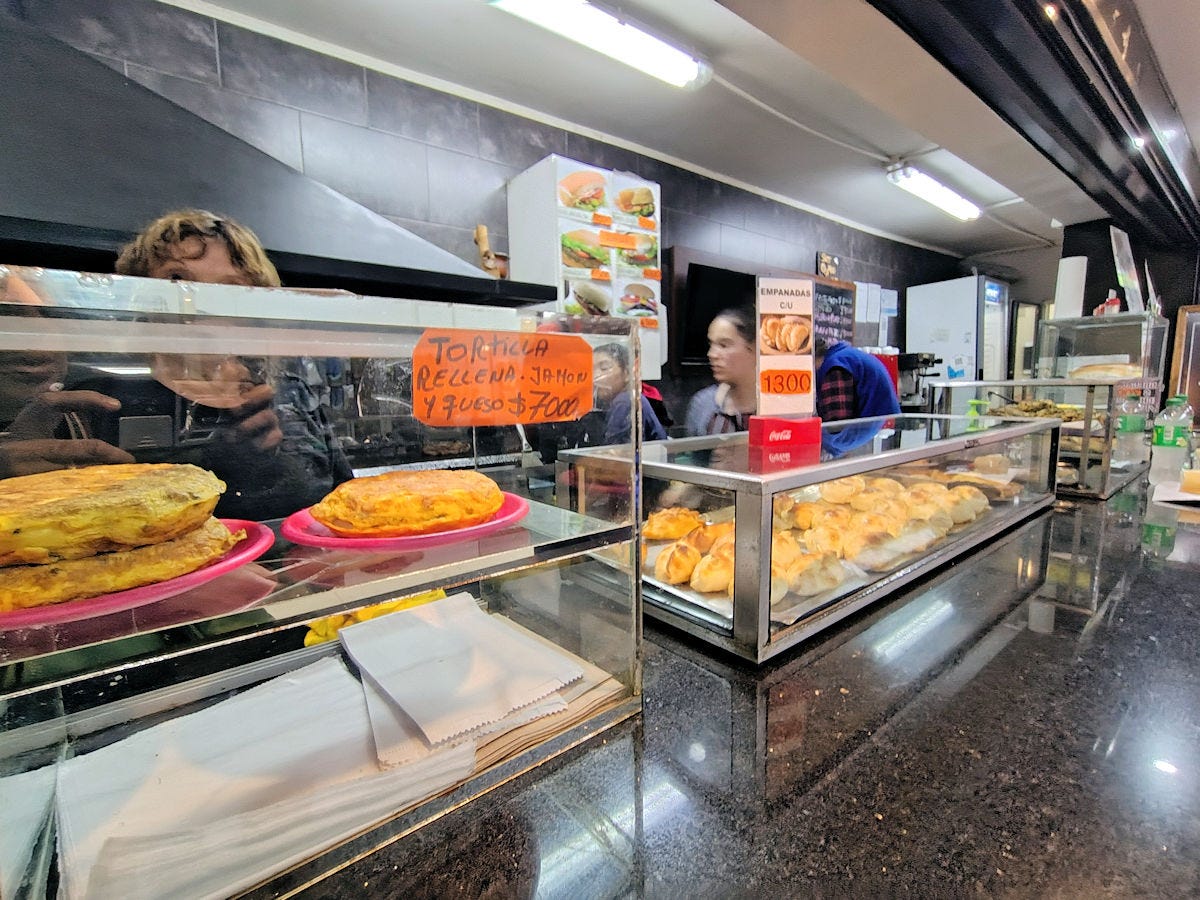
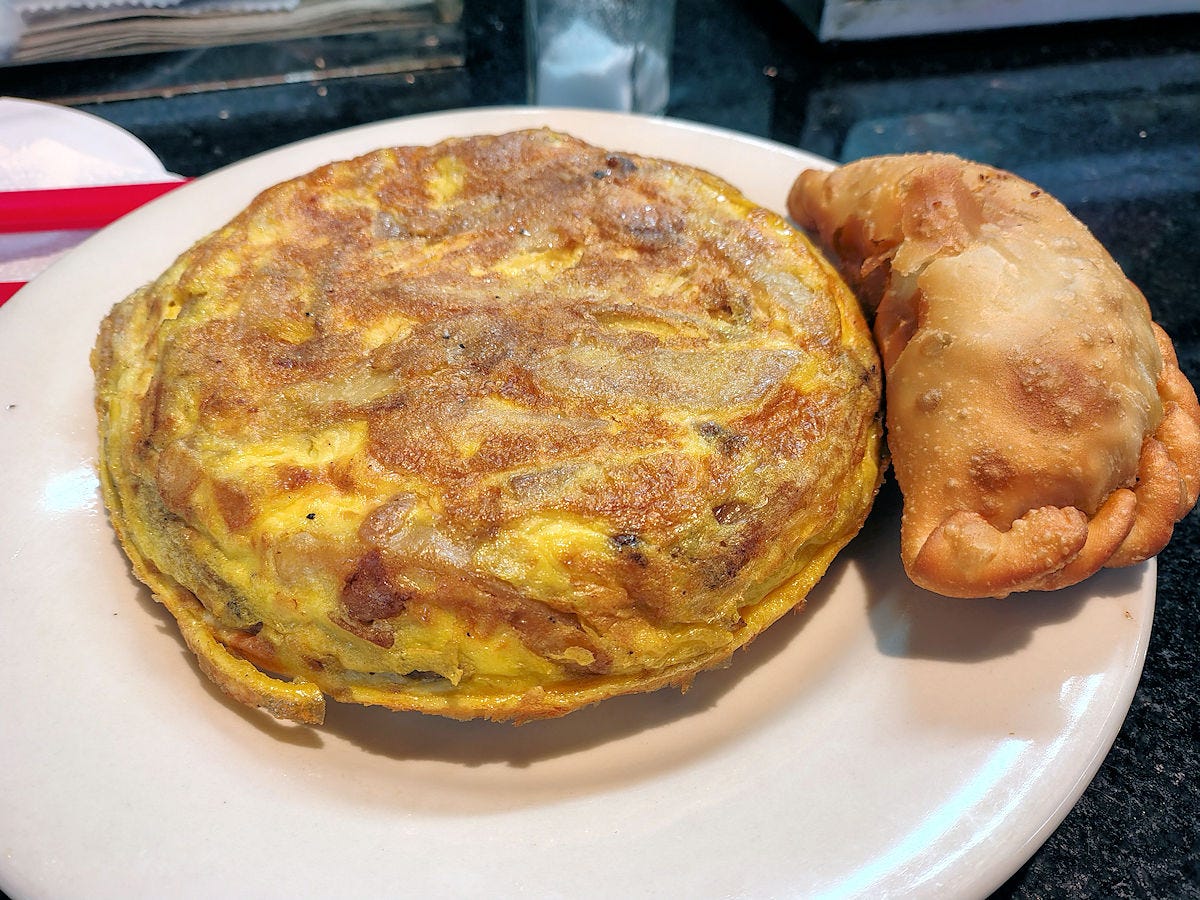
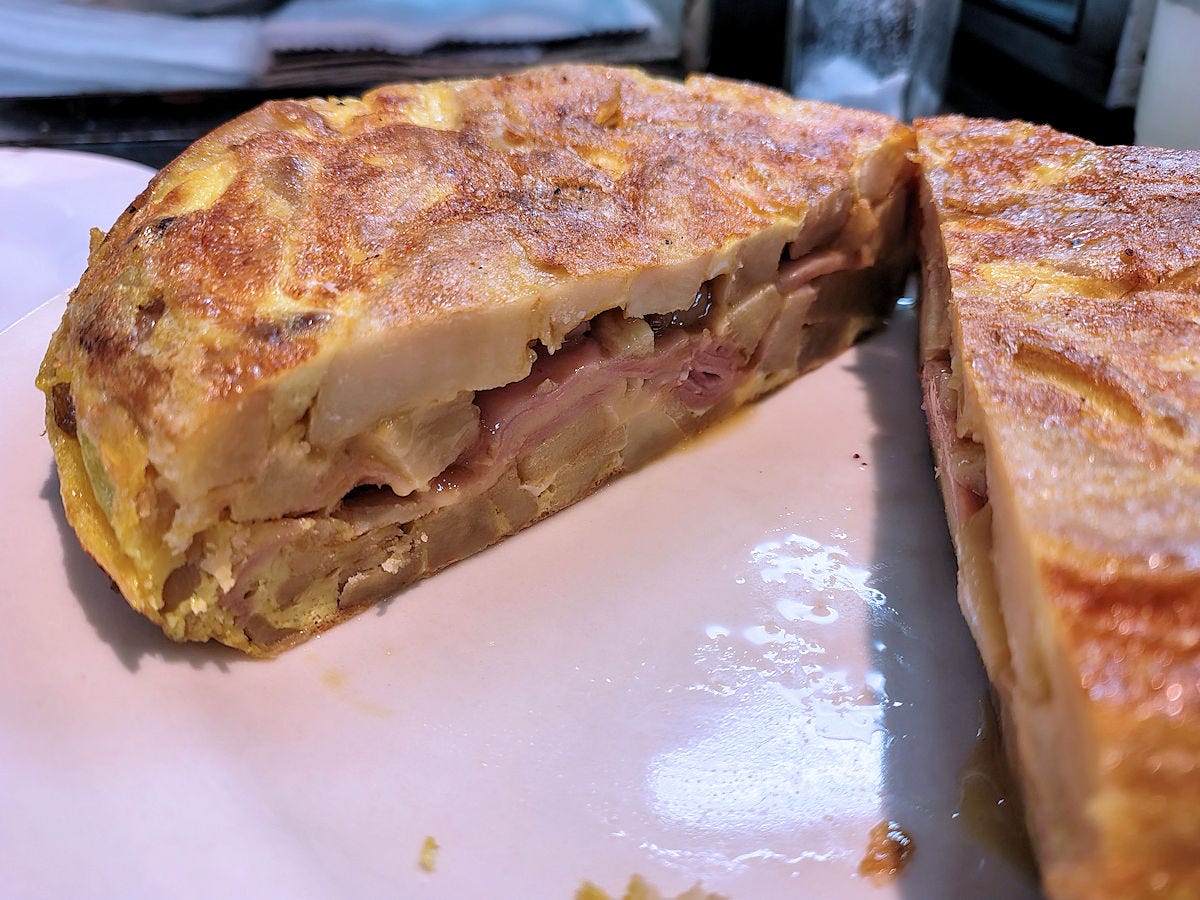
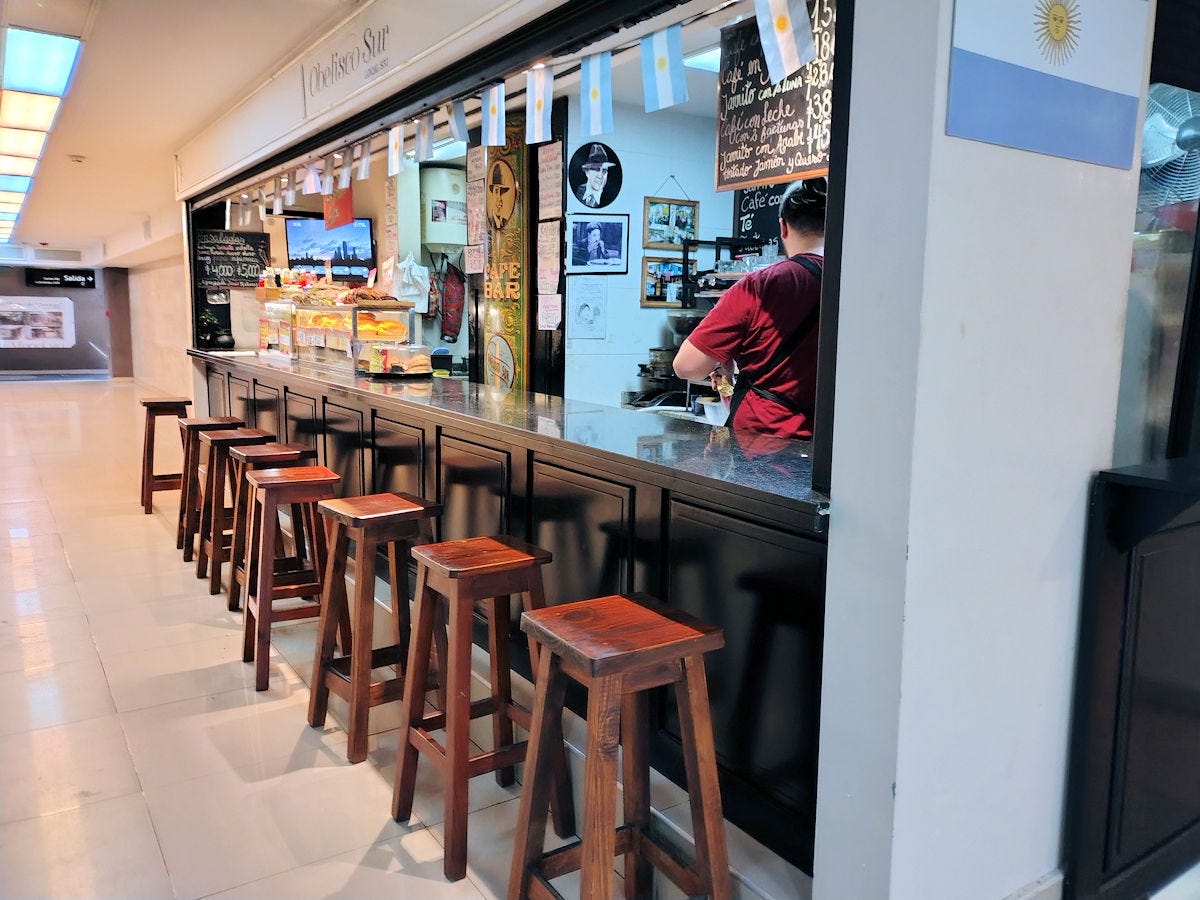
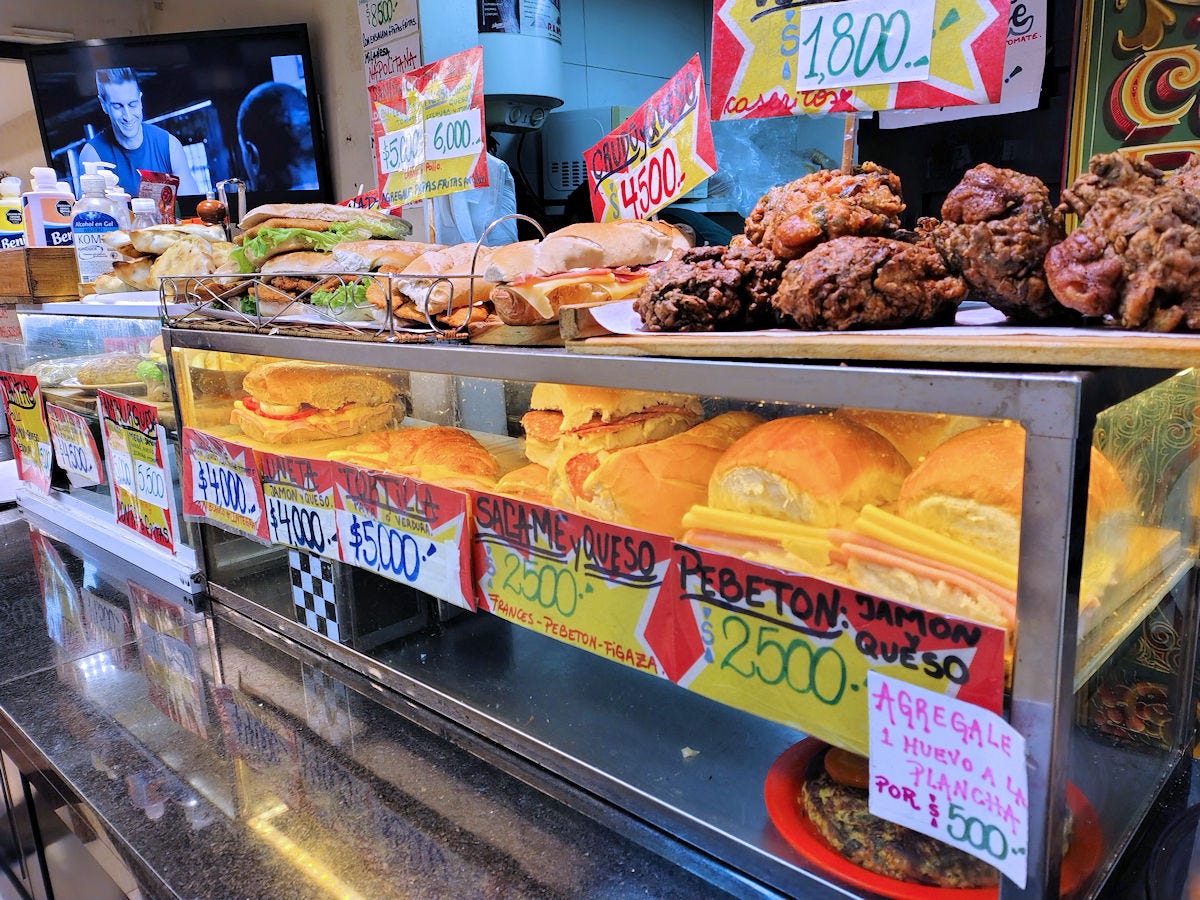
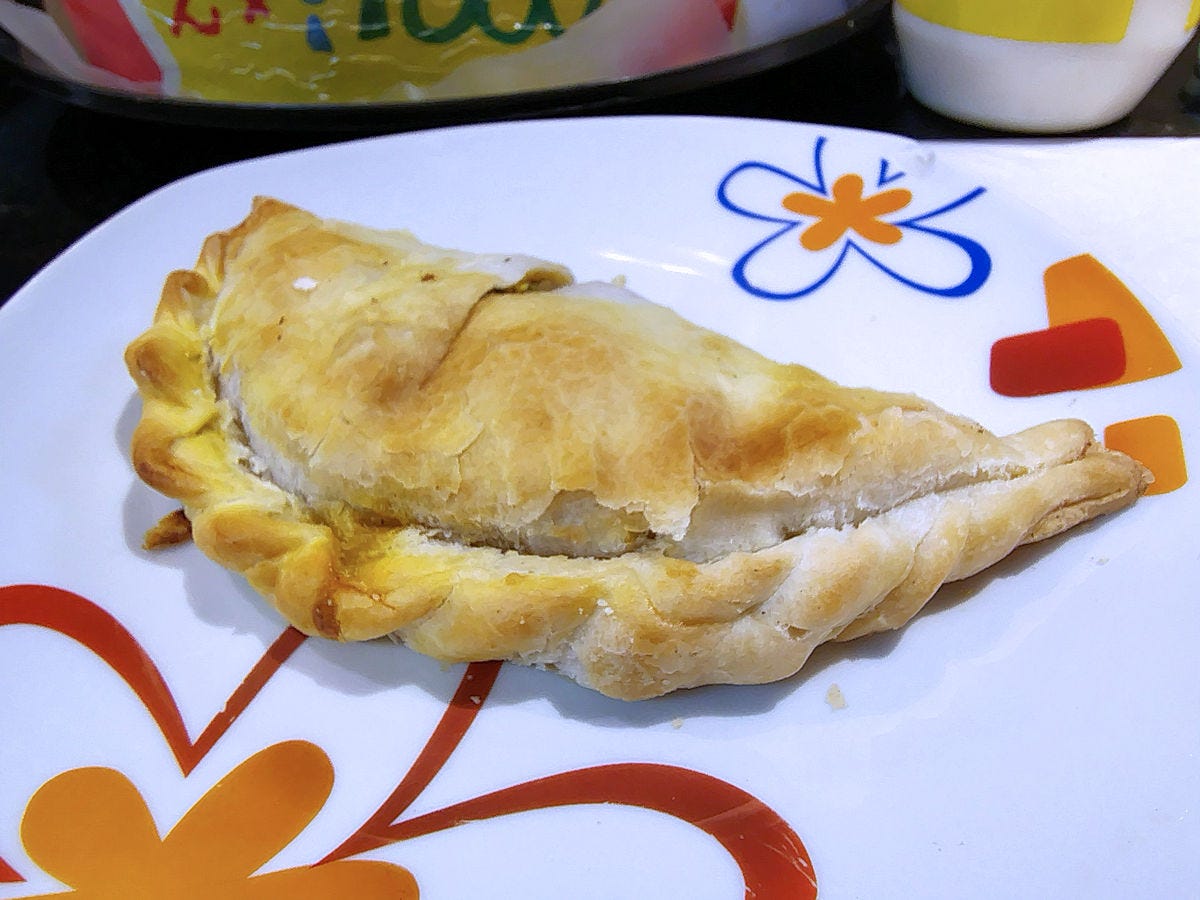
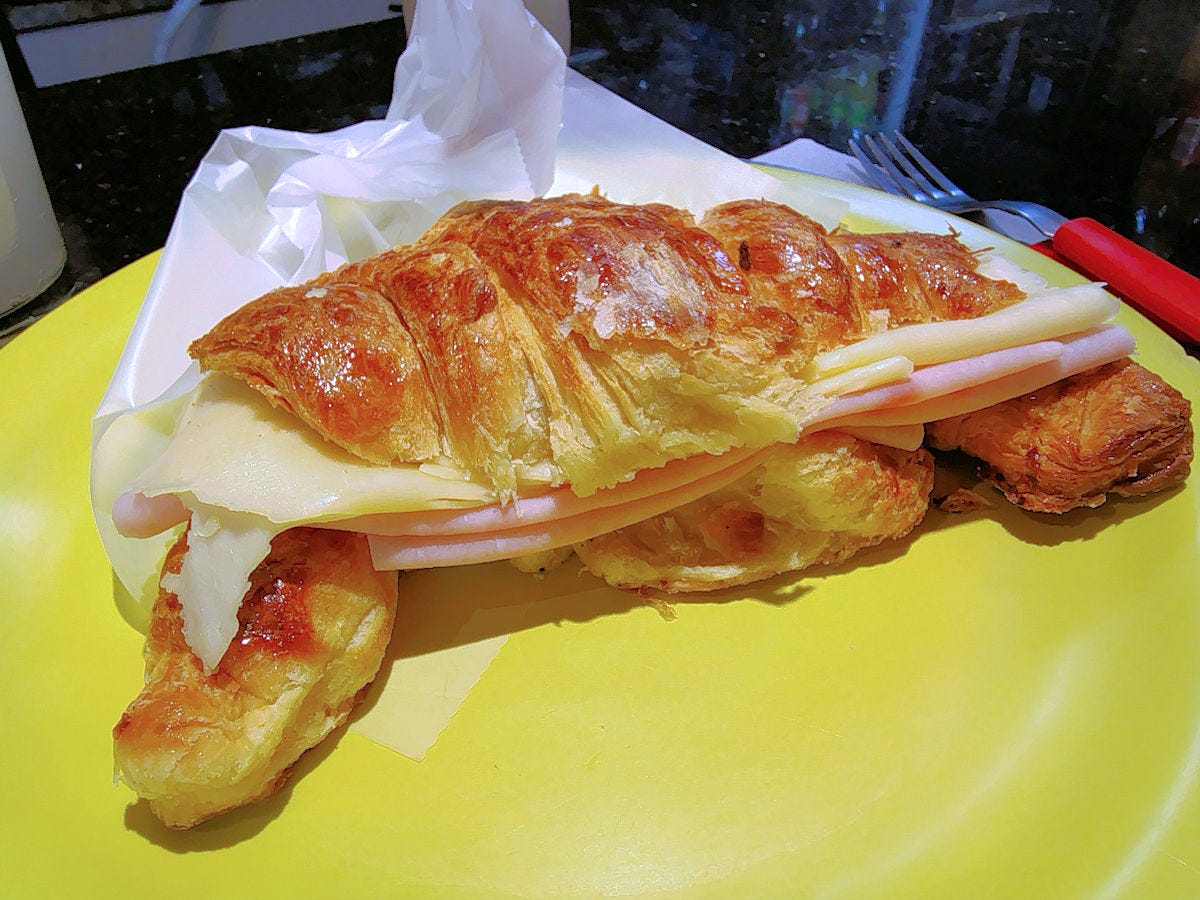

Your "here, here, and here" links are missing.